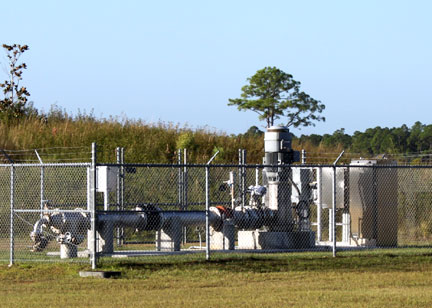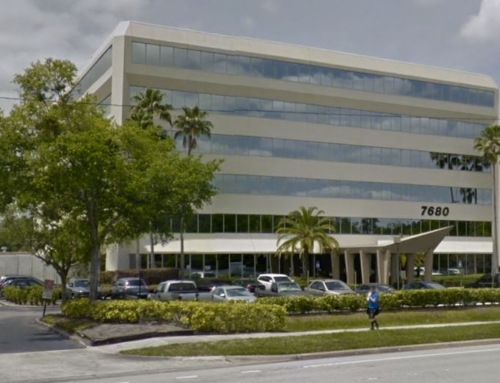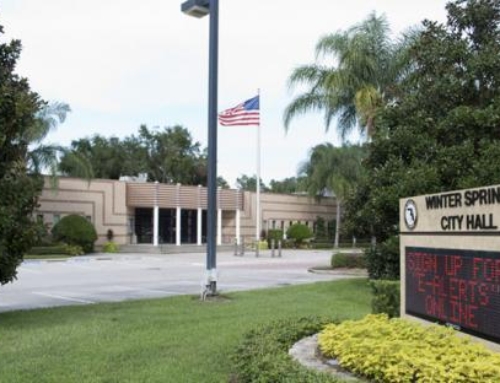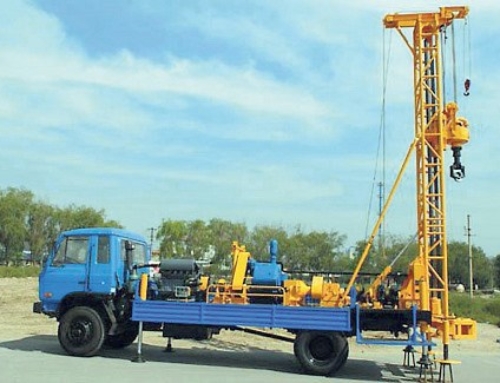n early 2001, several volatile organic compounds (VOCs) were detected in two of the City of Winter Springs’ five potable water supply wells. The supply wells are located near the western boundary of the City and provide 0.7 million gallons a day (gpd) of clean Floridan aquifer water to residents. Following discovery of VOCs, the City contracted E Sciences to provide hydrogeological assistance for investigating into the source of VOCs and assisting the City with protecting it water resources. Elements of this hydrogeological program included:
- Developing a scope of services for the project and performing project management, coordination, and project planning activities. This included identifying environmental issues, setting project goals and objectives, and negotiating with the SWFWMD and FDEP;
- Preparing a Geographical Information System (GIS) base map for the immediate well field and areas immediately surrounding the well field. The GIS material included current and future land use information from Seminole County of the immediate area of the wells and locating these features on the GIS base map.
- Geo-referencing location of water supply wells using a handheld global positioning system (GPS) and including this information on the GIS base map.
- Developing a non-calibrated groundwater flow model to simulate capture area for the well field and estimate travel times within the Floridan aquifer system.
- Performing windshield and field reconnaissance surveys to identify locations that pose a significant risk of impacting the City’s groundwater supply wells. These areas were located on the GIS base map
- Compiling, interpreting hydrologic data into understandable information and presenting this material in a letter report.
Using this information, the City solicited the FDEP Site Investigative Section to conduct a preliminary site assessment to evaluate the potential source of the VOCs detected in the City’s water supply wells. In April 2007, and after three years of investigations, the FDEP presented their findings in a preliminary contamination assessment report (PCAR) a draft of which was provided to the City. This PCAR listed four potential source areas for the VOC impacts. One of these locations the concentrations of TCE approached its solubility level, suggesting the presence of dense non-aqueous phase liquids or (DNAPLs) in the water table zone. Using the findings of the PCAR as justification, the FDEP is currently drafting compliance letters that will be delivered to the responsible parties. These letters will demand that the owners of properties where violation of groundwater cleanup target levels (CTLs) were observed initiate corrective actions to remove the VOCs from the groundwater.
An additional benefit of the program is to aid the City in adopting proactive steps, such as: monitoring industrial development near the well field capture zones, adopting a community awareness program to inform residents of the well field zones so that they can monitor actions in these sensitive areas, and establishing a groundwater monitoring system to provide advance warning of potential chemical impacts of the City’s groundwater resource.
Contact
- Mr. Kipton Lockcuff
- City of Winter Springs
- 1126 East S.R. 434
- Winter Springs, FL 32708
An additional benefit of the program is to aid the City in adopting proactive steps, such as: monitoring industrial development near the well field capture zones, adopting a community awareness program to inform residents of the well field zones so that they can monitor actions in these sensitive areas, and establishing a groundwater monitoring system to provide advance warning of potential chemical impacts of the City’s groundwater resource.








